How do whales survive and breastfeed in the ocean?
We all know that mammals are breast-fed, but whales live in the ocean, so it's hard to imagine how baby whales will breastfeed.
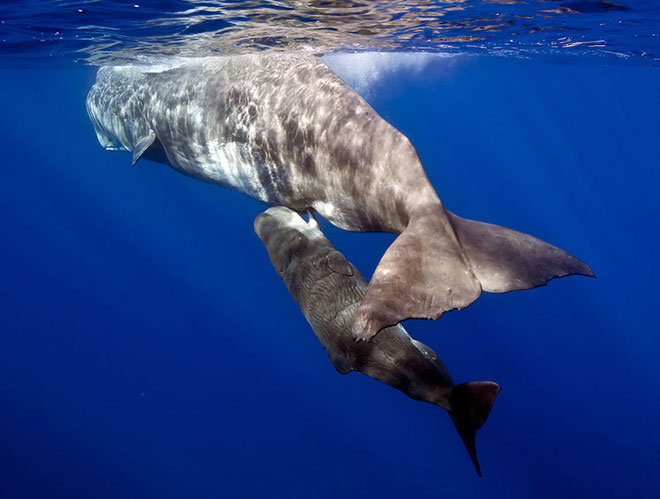
Although there is a word "fish" in the names of whales and dolphins, everyone knows that they are marine mammals. Because they are mammals, it is obvious that whales and dolphins will breastfeed their babies, but how do whales live in water and feed?
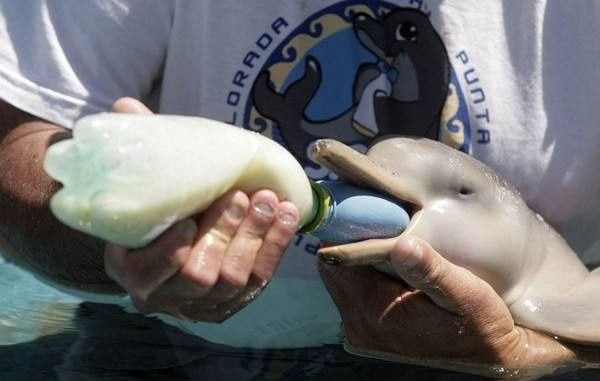
Images of lifeguards feeding baby dolphins, but one thing is for certain: in nature they will have a completely different way of suckling.
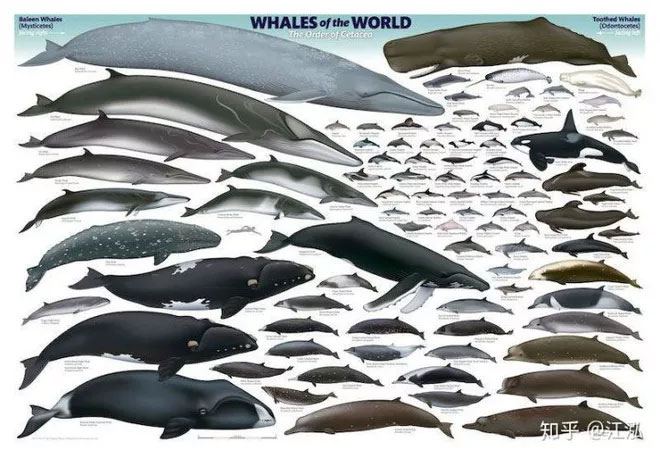
Whale set, derived from Latin cetus, whales include whales, dolphins and sperm whales. Although the name comes from the fish, but they are not fish, but true mammals.
In order to adapt to the underwater life, the whale's body becomes smooth and has a slippery skin like a fish, which reduces the resistance of the water when diving, while also making them more vulnerable. more injured if out of water.
If you look closely at the female's body, you probably won't find her breasts and nipples like other terrestrial mammals.
However, this does not mean that they do not have mammary glands to feed their babies. If we flip the whale and carefully observe their belly, we will find some clues.
There is a long crack in the belly of the female. This is the genital and anus slot. It is also understood that it is the place of production and excretion. Two small symmetrically distributed cracks can be seen on both sides of the genital opening. This is their mammary gland opening.
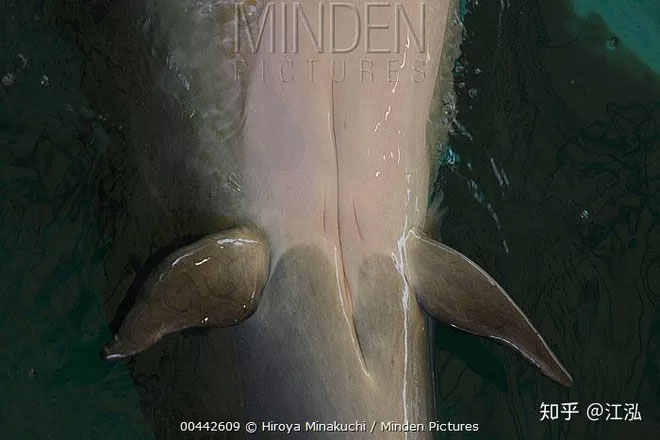
The belly of a female dolphin.

Compare the male and female structures of the whale set.
Because they are called glands, they are obviously hidden in their nipples, normally they are just two cracks and the nipples only appear during feeding (when whales breastfeed).
Compared to us humans and other common mammals, whales do not protrude into full breasts and their nipples are not long, and whales do not have any limbs. navigate the nipples to suck, so breastfeeding and raising your baby is not an easy task.

Whale nipple.
Without the flexible limbs to hold and to structure the mouth, their lips are also very hard, so the young whales can only use their tongue to wrap the mother's nipple while feeding.
At the same time, the female will keep the body in a state of almost motionlessness, and sometimes the mother's belly will be flipped over to help the baby whale to suck more easily.
However, the time for baby whales to suck is very short, only about a few seconds. To improve the efficiency of this task, the whale will shoot milk into the whale's mouth, and in a few seconds, the amount of milk can shoot up to 10 liters.
And now many people will think that whale milk can be diluted with seawater, but not. When breastfed, the whale's tongue curls up like a straw and the milk travels through it, and the whale's milk is unlike other mammals, which are viscous in form. like toothpaste, so it's difficult to be diluted with seawater.
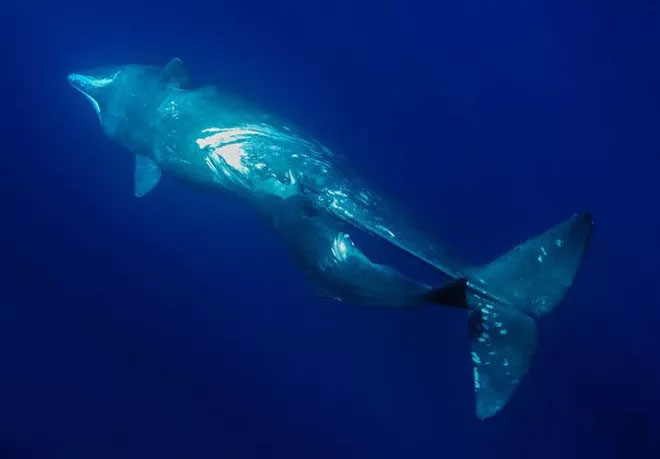
Images of sperm whales feeding mothers.

Killer whales also breastfeed in the same way.
Depending on the size of each species in the whale, the young will need a different amount of milk. In species with large bodies such as sperm whales or humpback whales, the juveniles can drink from 400 liters to more than 500 liters of milk per day.
And they also grow at a very fast rate, about 90kg per day and they will wean at about 6 months from birth. To ensure the growth of the offspring, the whale milk composition is completely different from other mammals such as cows or goats.
The fat content of whale milk usually exceeds 50%, so it's not uncommon for baby whales to gain a lot of weight every day, which is why whale milk is not a liquid. is like toothpaste.


Whale milk floats in the ocean.
With such a high fat content, there are probably many people who wonder if whale milk can be drunk like cow or goat milk, the answer is definitely yes, but the money can be taken and carried out. sterilizing whale milk is not cheap. In addition, no one has ever tasted whale milk, so it is not known whether they are delicious or not.
But in fact, researchers have tasted the dolphins' milk. This flavor is very unique and can be said for a lifetime to never forget because they smell very fishy.
They describe it as a fish-like oil mixed with liver oil and the milk is stirred up in a thick consistency, so it is possible that whale milk is not good even more unforgettable taste.
Although whale milk may not be delicious, it can ensure that young whales grow and grow in size quickly. This way of feeding and feeding whales is also the way they adapt to changes in habitat when their ancestors were originally terrestrial animals but gradually changed and lived in the ocean.
- Whale secret for breastfeeding like?
- The death of an old whale brings countless benefits to the ocean and its ecosystem
- Listen to the songs that fascinate whale's hearts from the depths of the ocean
- Ships run off the ocean song of humpback whales
- Whales cry because of aground, the action of the people makes everyone admire
- Blue whales were first discovered in the Red Sea
- The ocean is poisoned, half of the killer whales will die
- 'Fire Dragon' on the ocean floor
- The 5 reasons why killer whales are 'cold-blooded' geniuses of the ocean
- Strangely, killer whales make a living for handicapped children
- Humpback whales swim a quarter of the world
- Crocodiles never intentionally kill people
- Admire humpback whales dancing on the water
- Shocked with sightless whales nearly half of people swimming across the ocean
 Surprised: Fish that live in the dark ocean still see colors
Surprised: Fish that live in the dark ocean still see colors Japan suddenly caught the creature that caused the earthquake in the legend
Japan suddenly caught the creature that caused the earthquake in the legend A series of gray whale carcasses washed ashore on California's coast
A series of gray whale carcasses washed ashore on California's coast Compare the size of shark species in the world
Compare the size of shark species in the world Is the blue whale's heart really the size of a car?
Is the blue whale's heart really the size of a car?  Killer whale rips open whale shark's belly to get liver
Killer whale rips open whale shark's belly to get liver  Whale sets record by swimming across 3 oceans to find a mate
Whale sets record by swimming across 3 oceans to find a mate  Tactics that help killer whales hunt the largest fish on the planet
Tactics that help killer whales hunt the largest fish on the planet  World's rarest whale carcass washes ashore in New Zealand
World's rarest whale carcass washes ashore in New Zealand  Giant whale carcass washes up on Alaska beach
Giant whale carcass washes up on Alaska beach 